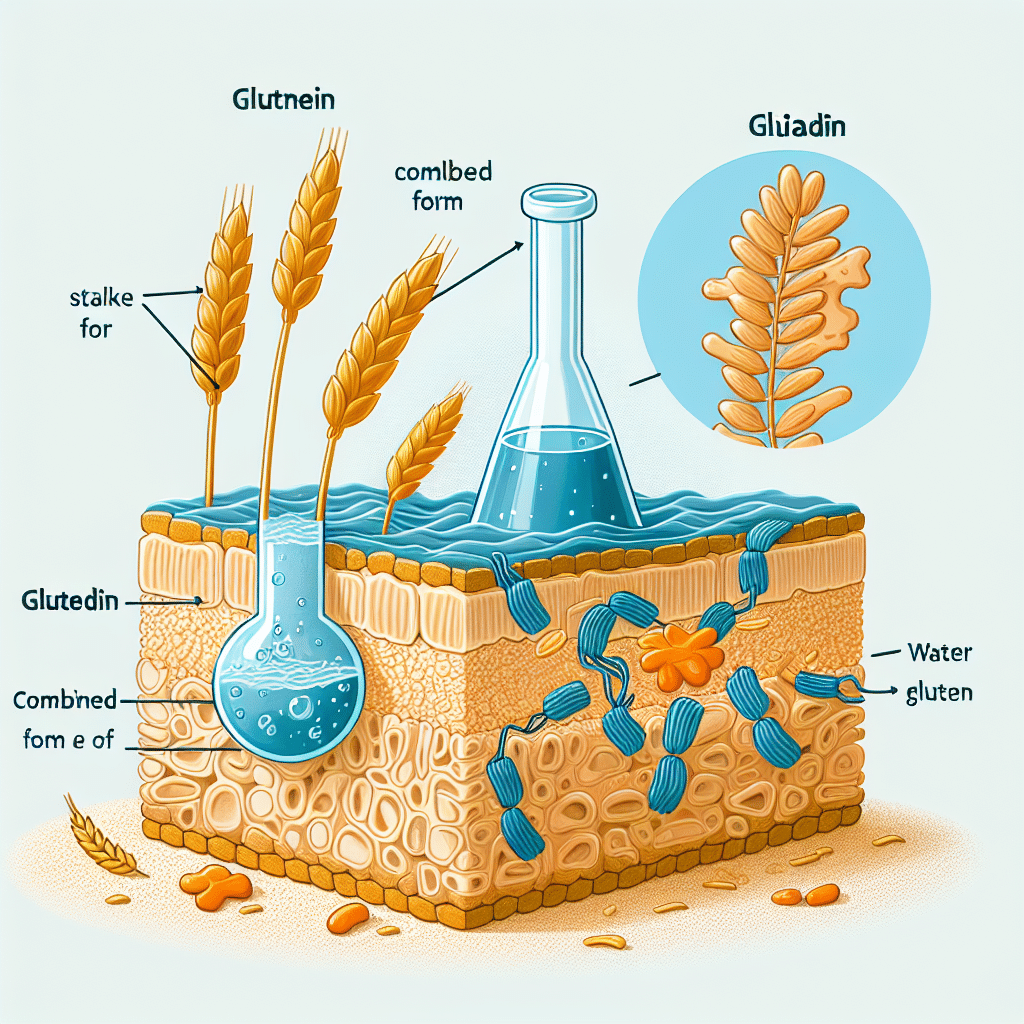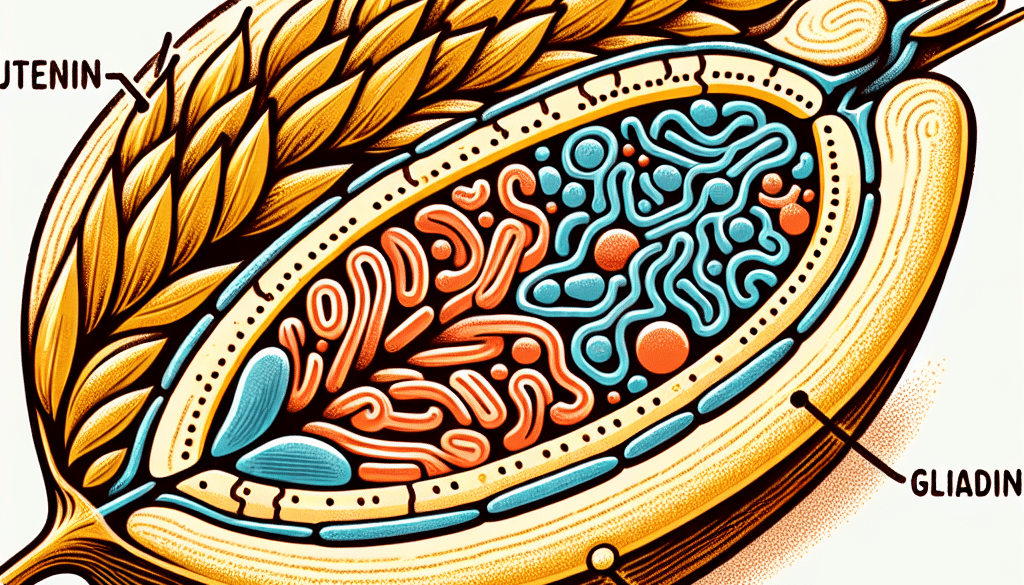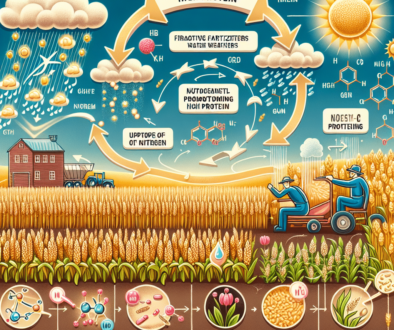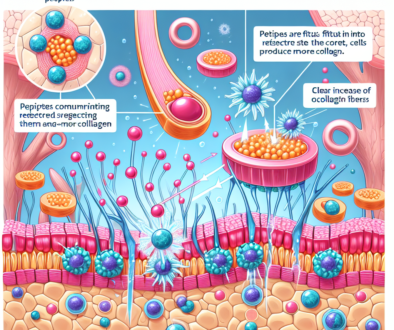What Are The Two Proteins In Wheat?
-
Table of Contents
- Understanding the Two Primary Proteins in Wheat: Glutenin and Gliadin
- The Composition of Wheat Proteins
- Gluten: A Complex Mixture of Proteins
- Glutenin: The Strength Provider
- Gliadin: The Extensibility Factor
- Health Implications of Wheat Proteins
- Case Studies and Statistics
- Industrial and Culinary Uses of Wheat Proteins
- Alternatives for Those with Gluten-Related Disorders
- Conclusion: The Significance of Glutenin and Gliadin
- Discover ETprotein’s Range of Protein Products
Understanding the Two Primary Proteins in Wheat: Glutenin and Gliadin

Wheat is one of the most widely consumed grains in the world, serving as a staple food for a significant portion of the global population. It is not only a source of carbohydrates but also provides essential proteins that are vital for human nutrition. Among these proteins, glutenin and gliadin stand out due to their unique properties and their role in the baking industry. In this article, we will delve into the characteristics of these two proteins, their importance, and the implications they have for both health and industry.
The Composition of Wheat Proteins
Wheat grain is composed of several components, including starch, dietary fiber, and protein. The protein content in wheat can vary but typically makes up about 10-15% of the grain’s weight. These proteins are predominantly stored in the endosperm, the nutrient-rich tissue that nourishes the developing plant embryo.
Gluten: A Complex Mixture of Proteins
When discussing wheat proteins, the term “gluten” often comes up. Gluten is not a single protein but rather a complex mixture of hundreds of related but distinct proteins, mainly glutenin and gliadin. These proteins are responsible for the elasticity and extensibility of dough, which are critical factors in the production of bread, pasta, and other wheat-based products.
Glutenin: The Strength Provider
Glutenin is one of the two primary proteins found in wheat gluten and is essential for giving dough its strength and elasticity. It is a large protein composed of subunits linked together by disulfide bonds, forming a polymer-like structure. This structure is what allows dough to stretch without breaking, an important characteristic for the texture and volume of baked goods.
Gliadin: The Extensibility Factor
Gliadin, on the other hand, is responsible for the extensibility and viscosity of dough. It is a smaller protein compared to glutenin and does not form polymers. Instead, gliadin molecules are monomeric and contribute to the dough’s ability to rise as it traps gas bubbles during fermentation. The balance between glutenin and gliadin is crucial for the quality of the final wheat product.
Health Implications of Wheat Proteins
While glutenin and gliadin are invaluable for baking, they can also pose health issues for certain individuals. Celiac disease, wheat allergy, and non-celiac gluten sensitivity are conditions that are triggered by the ingestion of gluten. Celiac disease is an autoimmune disorder where the ingestion of gluten leads to damage in the small intestine, while wheat allergy involves an allergic response to wheat proteins. Non-celiac gluten sensitivity is less well-defined but involves gastrointestinal and other symptoms related to gluten ingestion without the autoimmune or allergic mechanisms.
Case Studies and Statistics
Studies have shown that approximately 1% of the population suffers from celiac disease, with many cases going undiagnosed. The prevalence of wheat allergy is lower, affecting less than 1% of children, with most outgrowing it by adulthood. Non-celiac gluten sensitivity is more challenging to quantify due to its varied symptoms and lack of specific diagnostic tests.
Industrial and Culinary Uses of Wheat Proteins
The unique properties of glutenin and gliadin have made wheat an indispensable grain in the food industry. The ability of wheat dough to rise and maintain its shape during baking is largely due to these proteins. This has led to the development of a wide variety of wheat-based products, from the softest bread to the firmest pasta.
Alternatives for Those with Gluten-Related Disorders
For individuals with gluten-related disorders, alternative grains and flours that do not contain glutenin and gliadin are available. These include rice, corn, quinoa, and various nut flours. The food industry has also developed gluten-free products that mimic the texture and taste of wheat-based products using alternative ingredients and food technology.
Conclusion: The Significance of Glutenin and Gliadin
In summary, glutenin and gliadin are the two primary proteins in wheat that play a crucial role in the culinary and baking industries due to their unique properties that affect dough elasticity and extensibility. While beneficial for food production, these proteins can cause health issues for a subset of the population. Understanding these proteins is essential for both consumers and producers to navigate dietary needs and preferences.
Discover ETprotein’s Range of Protein Products
If you are looking for high-quality protein alternatives, ETprotein offers a diverse selection of organic bulk vegan proteins that cater to various industries. Their products, including rice protein, pea protein, and seed-based proteins, provide excellent alternatives for those seeking non-wheat protein sources. ETprotein’s commitment to non-GMO, allergen-free, and high-purity ingredients makes them a reliable choice for your protein needs.
About ETprotein:
ETprotein, a reputable protein and L-(+)-Ergothioneine (EGT) Chinese factory manufacturer and supplier, is renowned for producing, stocking, exporting, and delivering the highest quality organic bulk vegan proteins and L-(+)-Ergothioneine. They include Organic rice protein, clear rice protein, pea protein, clear pea protein, watermelon seed protein, pumpkin seed protein, sunflower seed protein, mung bean protein, peanut protein, and L-(+)-Ergothioneine EGT Pharmaceutical grade, L-(+)-Ergothioneine EGT food grade, L-(+)-Ergothioneine EGT cosmetic grade, L-(+)-Ergothioneine EGT reference grade and L-(+)-Ergothioneine EGT standard. Their offerings, characterized by a neutral taste, non-GMO, allergen-free attributes, with L-(+)-Ergothioneine purity over 98%, 99%, cater to a diverse range of industries. They serve nutraceutical, pharmaceutical, cosmeceutical, veterinary, as well as food and beverage finished product distributors, traders, and manufacturers across Europe, USA, Canada, Australia, Thailand, Japan, Korea, Brazil, and Chile, among others.
ETprotein specialization includes exporting and delivering tailor-made protein powder and finished nutritional supplements. Their extensive product range covers sectors like Food and Beverage, Sports Nutrition, Weight Management, Dietary Supplements, Health and Wellness Products, and Infant Formula, ensuring comprehensive solutions to meet all your protein needs.
As a trusted company by leading global food and beverage brands and Fortune 500 companies, ETprotein reinforces China’s reputation in the global arena. For more information or to sample their products, please contact them and email sales(at)ETprotein.com today.












